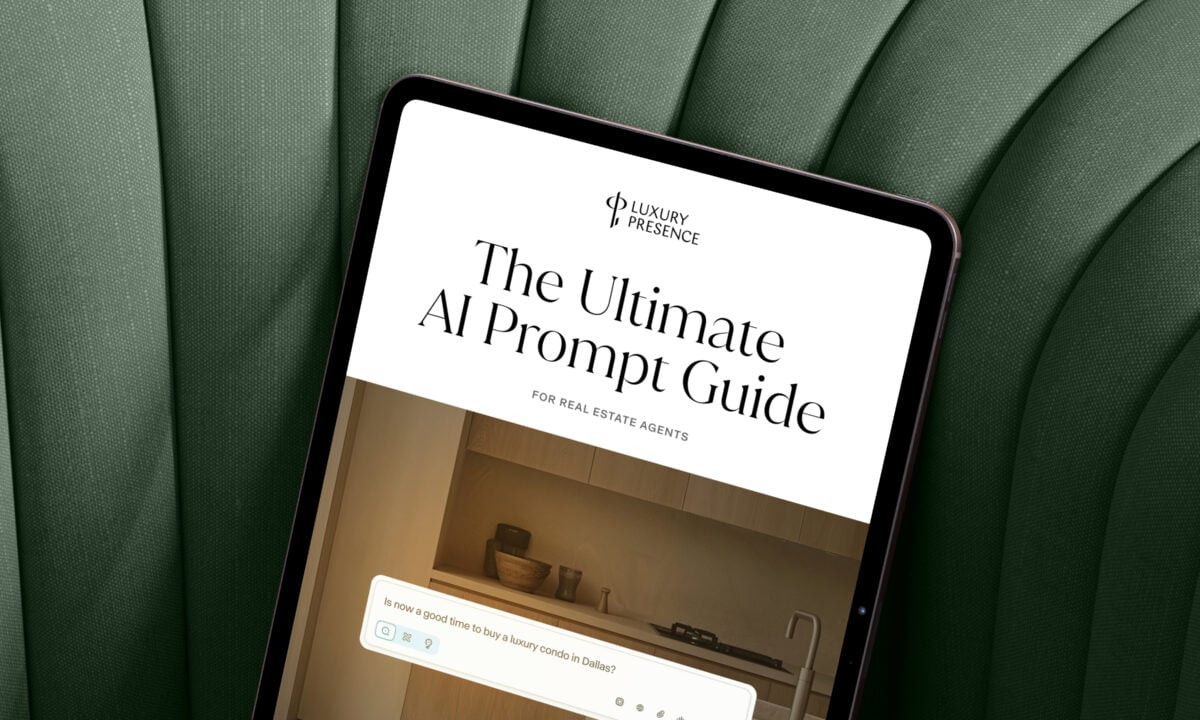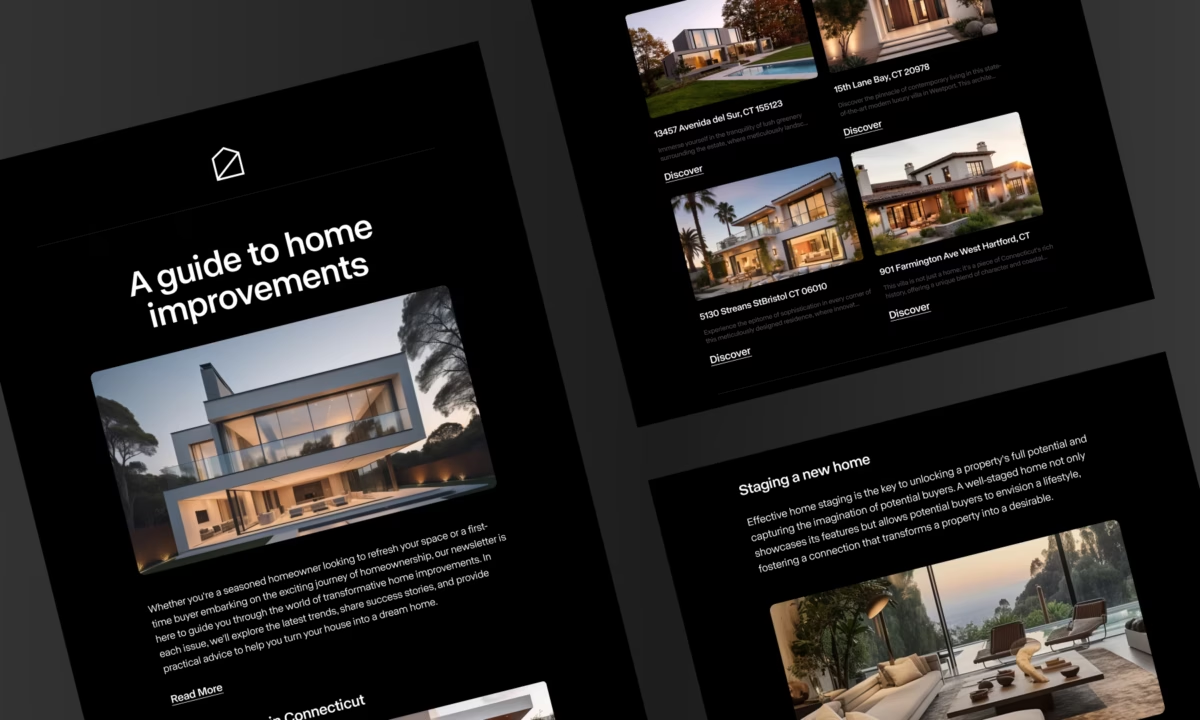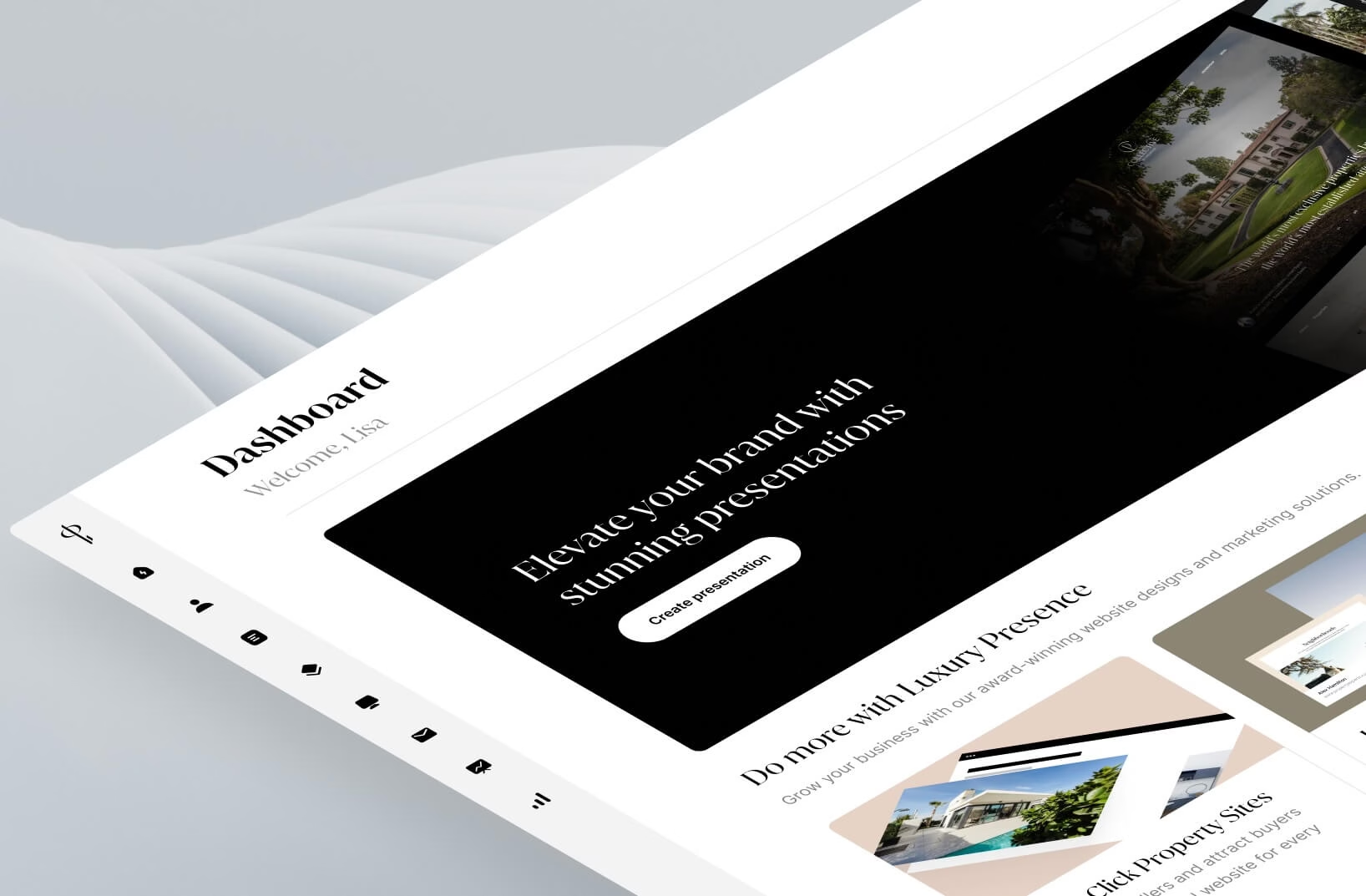
Managing your branding isn’t just about picking a logo and launching your website. It’s an ongoing conversation with your audience. Is your brand communicating what you want it to, and is it creating the kind of business impact you need?
For real estate agents, branding can feel abstract. But brand success leaves clues at every stage of the client journey. By tuning into the right signals, you can understand how your brand is performing and where it needs to evolve.
Find It Fast
Track brand impressions throughout the client journey
Awareness is the starting line, but your brand continues to influence potential clients as they move through their decision-making process. Don’t just look at how many people are seeing your brand; look at when and where they’re seeing it.
For example, are new visitors landing on your site after attending a community event, or are they coming from social media? Are they checking out your testimonials before they fill out your contact form, or are they contacting you immediately after reading a blog post?
Start by using analytics tools to map how people move through your digital presence. Look at:
- Traffic sources: Are visitors coming from Instagram, Google, your email newsletter, or referral sites? This shows which channels are working hardest to drive awareness.
- Entry points: Which page do most people land on first? Is it your homepage, a blog post, or a listing page? Understanding the first impression helps you shape content that captures attention right away.
- Navigation flow: Once users land on your site, what do they do next? Do they click into your “About” page, browse listings, or bounce immediately? If most users exit after viewing one page, that’s a sign your messaging or design may not be pulling them further in.
- Timing: Are spikes in web traffic aligned with specific campaigns or events? Did your Instagram Live lead to a surge in site visits that same day? This helps you tie visibility to real marketing efforts.
For example, if you notice that most qualified leads first interact with your brand via Instagram Stories but convert after reading a blog post on your site, you can double down on that sequence: use Stories to spark interest and link to content that builds trust.
Visibility isn’t just about how many people see your brand. It’s about whether they’re seeing the right message, in the right order, at the right time, and whether that sequence moves them closer to hiring you.
Your brand starts here
Use this companion to Josh Flagg’s masterclass to elevate your marketing and sharpen your online presence.

Pay attention to sentiment, not just engagement
It’s tempting to measure success by the number of likes, comments, or shares you get. But engagement without context can be misleading. The most valuable insights often come from the tone, language, and intent behind those interactions.
Start by reviewing your most recent social media and website interactions with a critical eye:
- Instagram DMs: Are people asking thoughtful questions about specific properties? Are they complimenting your staging style or sharing how your videos made them feel? Save or tag these messages. They’re gold for understanding what parts of your brand resonate most.
- Post comments and replies: Is your audience echoing your brand tone in the way they engage? For example, if you aim to present yourself as approachable and resourceful, comments like “You always explain things so clearly” or “This is exactly what I needed to hear” show brand alignment.
- Email responses: When you send newsletters or listing updates, note which emails get direct replies. Are people saying, “Loved this tip!” or “Can you tell me more about this neighborhood?” That’s a sign your content is engaging at a deeper level.
- Blog shares: Tools like BuzzSumo or even simple UTM tracking can help you see not just how many times a post was shared, but where and how it’s being framed. If someone shares your post with a caption like, “This agent always breaks it down in a helpful way,” that reinforces your brand voice.
To track this consistently:
- Create a brand sentiment folder or tag in your CRM or inbox for saving high-value messages.
- Review feedback weekly or monthly and look for patterns in tone. Are people consistently calling you professional, warm, knowledgeable, or stylish? These are emotional brand signals that numbers alone won’t show.
- Incorporate insights into your marketing by leaning into the qualities your audience already associates with you. If people call you trustworthy, highlight client stories or testimonials. If they call you innovative, showcase your process or tools more prominently.
Ultimately, measuring sentiment gives you clarity about how your brand is being perceived — and whether it matches the experience you’re trying to create. A single, enthusiastic DM can be more valuable than a hundred passive likes.
Use lead behavior to evaluate brand clarity
When your brand is clear and compelling, the leads you attract should feel like a natural fit. This means they already know what you offer, what you value, and what to expect from the experience of working with you.
If you’re getting frequent inquiries from people outside your target price point, or if leads come in with mismatched expectations, that’s a sign your branding may be sending the wrong message.
Your CRM is one of the most valuable tools you have for assessing how well your brand is working. When your branding is clear and aligned, you should notice patterns: The right people reach out, move quickly through your funnel, and come in already familiar with your value.
Use your CRM to look for the signals beneath the surface:
- Connect lead source to lead quality. Compare which marketing campaigns bring in your most aligned clients. Did your buyer’s guide ad on Facebook lead to serious inquiries from your ideal price point, while a branding video on Instagram led to casual DMs? Use this data to invest more heavily in the campaigns that attract decision-ready clients.
- Identify the friction points. Which lead sources tend to generate inquiries that don’t convert? For example, if you’re getting a high volume of leads from Google Ads but many don’t book follow-ups, it may indicate a mismatch between your messaging and the expectations you’re setting in that channel.
- Segment by type of client and messaging. Do first-time homebuyers respond more to educational blog content, while luxury clients convert better through personal branding videos? This insight allows you to refine your messaging and calls to action for each segment of your audience.
To make this actionable, schedule a monthly 30-minute review of your CRM data with a focus on lead behavior patterns. Look at:
- Where your most qualified leads are coming from.
- What they’re engaging with before they contact you.
- How quickly they’re converting compared to lower-quality leads.
- Where drop-off is happening in your marketing funnel.
This data gives you a clear picture of whether your brand is attracting the right people and whether your online presence is aligned with the clients you want to serve. If it’s not, it’s a signal to adjust your messaging, offers, or audience targeting.
Look for brand stickiness, not just brand reach
The most powerful brands attract and retain. Your brand should leave a lasting impression, one that keeps clients coming back and motivates them to send referrals your way.
To evaluate whether your brand is sticking, ask yourself:
- Are past clients recommending you in local Facebook groups or community forums?
- Are they tagging you in Instagram Stories when they celebrate milestones in their home?
- Do your newsletters or holiday cards lead to replies, referrals, or re-engagement?
- Are clients who closed years ago still opening your emails or following your content?
These moments signal that your brand is relevant, valued, and remembered. To turn this into a system:
- Create a retention touchpoint calendar. Schedule quarterly check-ins with past clients via email, text, social media DM, or even in person. Share a useful tip, a local market update, or even a personal note. The goal is to stay top-of-mind without being transactional.
- Track referral sources. In your CRM, make note of how each new lead heard about you. Over time, calculate what percentage of new business comes from past clients or their direct referrals. An increasing share of referral traffic is a clear indicator of brand loyalty.
- Encourage public feedback. After closing, ask clients if they’d be comfortable sharing their experience on Google, Zillow, or Instagram. Make it easy by providing links or writing prompts. These testimonials not only build credibility but also reinforce your brand’s emotional value.
- Look for long-tail engagement. Monitor email open rates and social media engagement from past clients six, 12, even 24 months out. If they’re still watching, reading, and responding, your brand has staying power.
Brand stickiness is about building meaningful relationships that last. The more consistently you show up with value and authenticity, the more likely clients are to come back and bring others with them.
Brand performance + Luxury Presence
At Luxury Presence, we help you own your position in the market. Our platform is designed to elevate every aspect of your brand, from award-winning websites and personalized design to compelling content, marketing automation, and lead-generating tools. Whether you’re building your brand from the ground up or refining an established presence, we give you everything you need to attract the right audience and turn impressions into action.
Luxury Presence can elevate your marketing strategy
Learn how we can help take your real estate business to the next level. Schedule a time to speak with one of our branding experts today.




